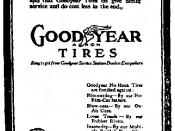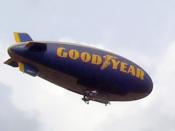Michelin case study
ENVIRONMENT ANALYSIS
Strategic Business Units
Commercial vehicles Passenger vehicles Others
Original equipment Segment 1 Segment 2 Segment 3
Replacement Segment 4 Segment 5 Segment 6
Key Success Factors
Commercial vehicles Passenger vehicles Others
Original equipment Price
Tire design
Tire performance:
Durability
Retreadability Price
Tire design
Tire performance:
Durability Price
Tire performance:
Quality
Durability
Replacement Price
Distribution service
Tire performance:
Durability
Retreadability Price
Distribution service
Tire performance:
Durability Price
Distribution service
Commercial versus Passenger Vehicles: Compared to passenger car tire, differences in tire performance, such as durability and retreadability can give a manufacturer a considerable competitive advantage. Truck tires are five or seven times the price of passenger car tire. Though demand for passenger and commercial tires is driven by different factors, there are important synergies between the segments. For example, advances made in large tire design were often transferred to smaller tires. In addition, many larger retailers would only buy from manufacturers which provided a full range of tires.
Michelin Had a product range over 3300 tires covering tire of all categories.
Original equipment versus replacement: The Original equipment market typically carried low margins due to gain the larger volume orders. There are substantial geographical differences among original and replacement tire market. Replacement tires are generally sold through wholesales and related distribution channels can be competitive advantage. As in the OE market the purchase of truck tires in the RE market is made on technical criteria rather than on brand image.
PORTER ANALYSIS of TIRE INDUSTRY (Michelin)
Entry Barriers
Entry barriers are economic and technological forces that prevent outside firms from competing in an industry. Entry barriers depend on technological and commercial relationships within the industry. The most important barriers to entry are cost advantages, product differentiation, access to distribution channels, and miscellaneous barriers such as patents...



To long but good.
TO much to ask for but faitly good.
0 out of 0 people found this comment useful.